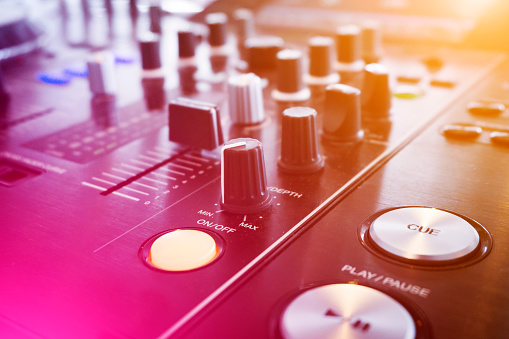Recent Posts
Search Topic
Who can modify the tonal aspect of sound? What is Equalizer? Equalization is the process of balancing between frequency components within an electronic signal. It also changes the quality of audio tone. It is often found in mixer as a built-in component. Equalization is a vital part of any mixer. Equalization is one of the most fundamental processes in music production.

A filter is any device or circuit that changes the tone, or timbre of an audio signal. Equalization generally consists of filter stages. Every filter and EQ has a phase response which varies in some way relative to the frequency.
When reduces low frequencies below a certain frequency, is called Highpass Filter. Also named as low-cut filter. There’s no boost or cut control.
The low-pass filter or a high-cut filter, just the reverse of above mentioned. It uses to remove high frequency sounds like hiss or excessive brightness. It lowers the sound level above any selected cutoff.
It is a great option for equalizing a signal. It applies the same gain change, or adjustment, to all frequency sounds.
Some advanced filter designs create a peak resonance at the cutoff point for extra boom or force, is called peaking filters.
There are multiple variations of equalizers.
These are the most commonly used and versatile type of equalizer in music production. It helps to select the center frequency we want to equalize, bandwidth and gain. It’s multiband equalizer. Analog parametric equalizers typically range from three to eight bands, while digital parametric equalizers more bands. Parametric equalizers come in two basic variants: semi-parametric and fully-parametric. It is fully configurable and adjustable frequency bands.
It’s different from Parametric equalizer, as it’s can’t change the allocated bandwidth. Similar in selecting the frequency for equalizing and gain.
It’s perfect for live performance. It comes in various sizes. Most used in professional recording in the 20th century. It can have up to 31 or more bands. With more bands it shows higher accuracy over the frequency spectrum. It has narrower bandwidths. There is no control over the filter shape and bandwidth of each band. The most common is the octave graphic equalizer.
The most simple and inexpensive equalizer. Can treble and boost tone controls found in consumer electronics. It can be found in any common equipment such as a stereo or Hi-Fi equipment. It have predetermined filter curves with a wide Q. Majority shelving equalizers have high and low shelving filters.
It is combine the precision of parametric equalization with the dynamic control of compression or expansion. This versatile combination gives you more control over shaping and enhancing sounds. Work similarly to multi-band compressors. Dynamic equalizers are especially useful for evening out the occasional booming or strident word in an otherwise great vocal performance. It can be especially helpful when mixing dynamic instruments, like drum kits.
It is critical for creating a perfect mix and a professional sound. There is an equalizer optimized for every tone-shaping task , think of music don’t stop go out try some different types of equalizers on every sound you come across.